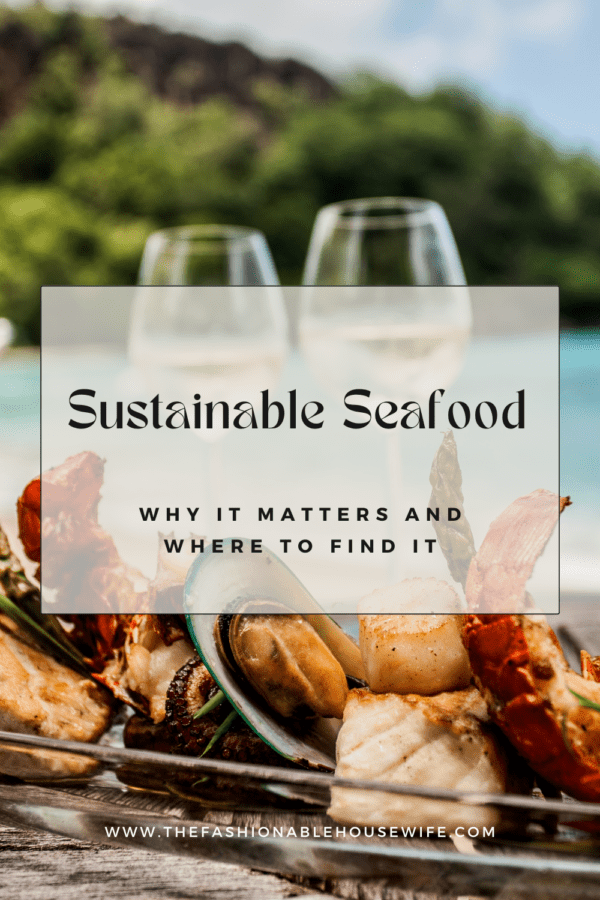
Seafood is a vital source of protein for millions of people worldwide. Choosing sustainable seafood helps ensure more fish are in the sea now and for future generations.
Look for the MSC or Aquaculture Stewardship Council logos on tinned or frozen seafood products. Or opt for a seafood subscription service that ships locally caught sustainable seafood directly to your doorstep.
It’s Good for You
Seafood is a healthy diet staple, but making smart choices about your seafood is important. Eating sustainable seafood helps ensure that ocean ecosystems remain healthy, fishing communities stay stable, and fish populations can meet the increasing demand for seafood from a growing world population.
Overfishing and destructive fishing practices damage marine habitats, so choosing sustainable seafood is important. Unfortunately, most seafood in the United States is imported, so it’s difficult to know how your seafood was caught or raised. You can do your part by asking questions when dining out or purchasing seafood in the grocery store, as well as choosing species that are lower on the food chain, like oysters and mussels or Pacific geoduck clams (which are farmed using bottom culture methods) instead of predatory fish such as salmon or tuna.
When you do make a seafood purchase, look for options with the Marine Stewardship Council’s MSC label. This certification guarantees that your seafood was sourced in a way that protects the environment, fisheries and people. In addition, many grocery stores and restaurants prioritize sustainability, so ask your local grocer or restaurant what their standards are for sourcing their seafood.
First, check if your preferred restaurant or grocer, such as Pier Market seafood restaurant, carries certified sustainable options to ensure you choose sustainable seafood. Then, consult the online seafood watch guide for sustainable choices.. This easy-to-use resource allows you to search for specific fish or shellfish, including information on how they were sourced and any sustainability certifications that might apply.
It’s Good for the Environment
Sustainable seafood is caught or farmed in ways that consider the long-term vitality of harvested species, the health of oceans and fishing communities, and minimize interactions with protected wildlife. This approach helps ensure the world’s fish populations are resilient against industry overfishing and supports local communities’ economic and environmental sustainability.
The heavy demand for certain seafood species has led to their overfishing, which strains marine ecosystems and the surrounding habitats. However, the good news is that some of these overfished fish stocks have already recovered thanks to recent conservation efforts.
In addition, eating more sustainable seafood is one of the most environmentally efficient choices we can make. Seafood is Earth’s most carbon-efficient protein source, requiring no land and using very little freshwater while absorbing carbon from the atmosphere as it grows.
Buying local and in-season is the best way to reduce your seafood’s carbon footprint. This will help support local fishermen and their families and lower the seafood’s carbon footprint by reducing the energy needed for transportation on boats, planes, and delivery trucks. Choosing seafood low on the food chain, such as domestic tilapia, catfish, oysters, and mussels, is also great for the environment since these options require very little water to grow. Additionally, avoiding dredging and bottom-trawling fishing methods will greatly reduce the impact on marine life.
It’s Good for the Economy
Choosing seafood that has been sustainably caught or farmed helps ensure that local fishermen can continue to work in the industry. It also reduces the need to travel long distances with large ships, burning fossil fuels and releasing greenhouse gases that can cause climate change. Locally sourced seafood is also fresher, meaning it’ll have less carbon footprint.
The heavy demand for a few popular seafood species has led to their overfishing. This has a ripple effect on the food chain, as the next level of marine life may not have enough to feed itself, which can lead to the extinction of that species. This can also cause problems for the humans that depend on that type of seafood to survive.
This is why it’s important to eat a wide variety of seafood and switch between species every so often. It’s also a good idea to choose wild-caught seafood over farmed, as the fishing methods used for this kind of fish are more sustainable and do not cause habitat damage or use live animals as feed.
When choosing seafood, look for the Marine Stewardship Council label at your local grocery store or restaurant. This label ensures that scientists and experts have certified the seafood as environmentally sustainable. This is an essential step in ensuring the health of our oceans and helping to protect local communities.
It’s Good for the Community
Seafood is a crucial food source for millions of people around the world. It’s also critical to many cultures, livelihoods and cultural traditions. However, seafood production can be a complex issue with many environmental and social impacts. For example, overfishing can lead to species depletion, while seafood mislabeling and slavery are prevalent problems in the industry. Additionally, ocean-based initiatives can generate high levels of greenhouse gas emissions. To minimize these impacts, consumers can choose seafood products with sustainability certifications or support local fishermen.
Choosing sustainable seafood can help protect the environment, the health of people and the prosperity of businesses. However, knowing what options are available at your local restaurants or grocery stores can take time and effort. Fortunately, some restaurants, markets and seafood companies prioritize sustainability and have transparency in their supply chains. You can also look for seafood with a blue Marine Stewardship Council tag to ensure your seafood is sustainably caught or farmed.
When purchasing seafood, try to select fish that is locally sourced. This will limit the carbon footprint of your meal because it will not have to travel as far. In addition, if your fish is sold unpackaged, it will likely be freshly caught and has a smaller environmental footprint than those frozen or canned.



